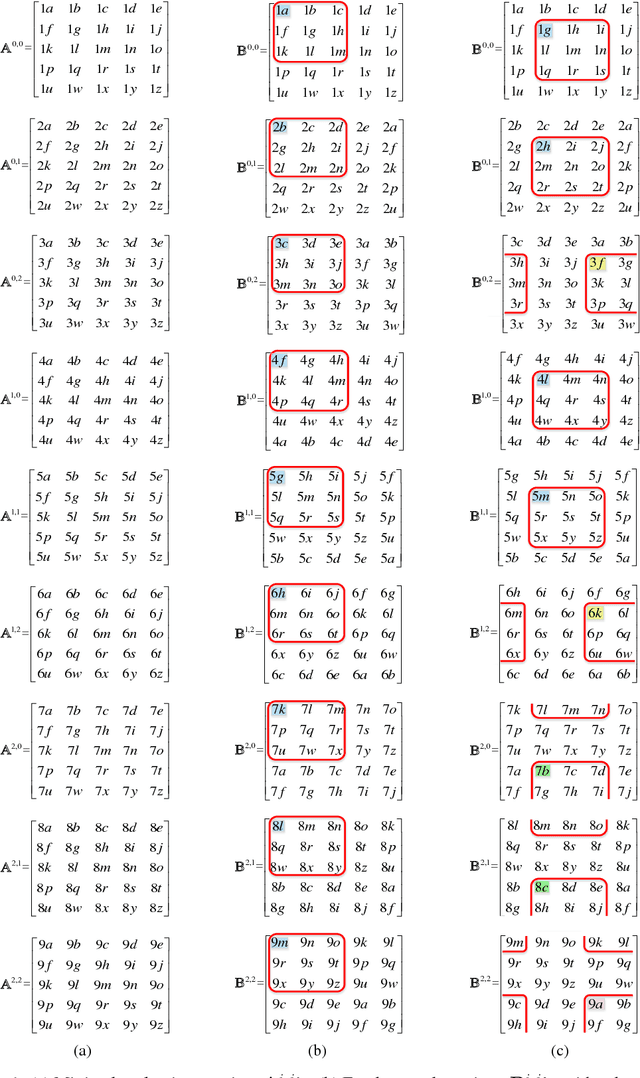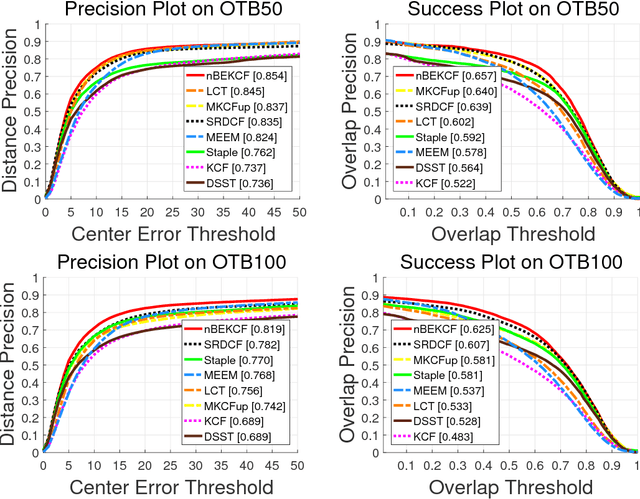High Speed Kernelized Correlation Filters without Boundary Effect
Paper and Code
Jul 10, 2018



Recently, correlation filter based trackers (CF trackers) have attracted much attention in vision community because of their top performance in both location and speed. However, the boundary effect imposed by the periodic assumption for the efficient optimization seriously limits their location accuracy. Although there existed many modern works to relax the boundary effect of CF trackers, they all are not able to eliminate the boundary effect thoroughly as well as exploit the kernel trick to improve their location accuracy, and their speeds are reduced greatly. Either relaxing the boundary effect or being able to exploit kernel trick to improve the accuracy, and either relaxing the boundary effect or keeping CF trackers running at high speed have been two dilemmas in the society of visual tracking. To solve these problems, in this paper, we propose a high speed kernel correlation filter without the boundary effect (nBEKCF). Unlike all current CF trackers which exploited real and virtual image patches to train their regression functions, we construct a set of non-orthogonal bases with a group of circulant basic samples and utilize a function defined in Hilbert space and a set of densely sampled, totally real patches to regress a Gaussian goal. This way, the boundary effect is eliminated thoroughly in theory and the kernel trick can be employed naturally. To ensure nBEKCF runs at high speed, we present two efficient algorithms, ACSII and CCIM, to significantly accelerate the evaluation of kernel matrix without employing FFT. By exploiting the circulant structure of basic samples, the efficiency of CCIM in evaluating correlation exceeds that of FFT remarkably. Preliminary experimental results on two public datasets, OTB2013 and OTB2015, show that, without bells and whistles, nBEKCF outperforms representative trackers with hand-crafted features, in the meanwhile, runs at 70 fps on average.
 Add to Chrome
Add to Chrome Add to Firefox
Add to Firefox Add to Edge
Add to Edge